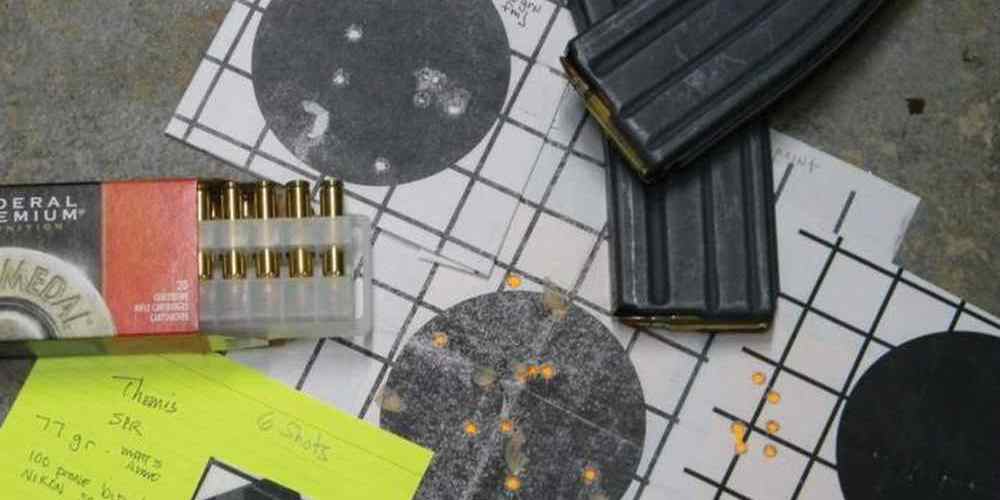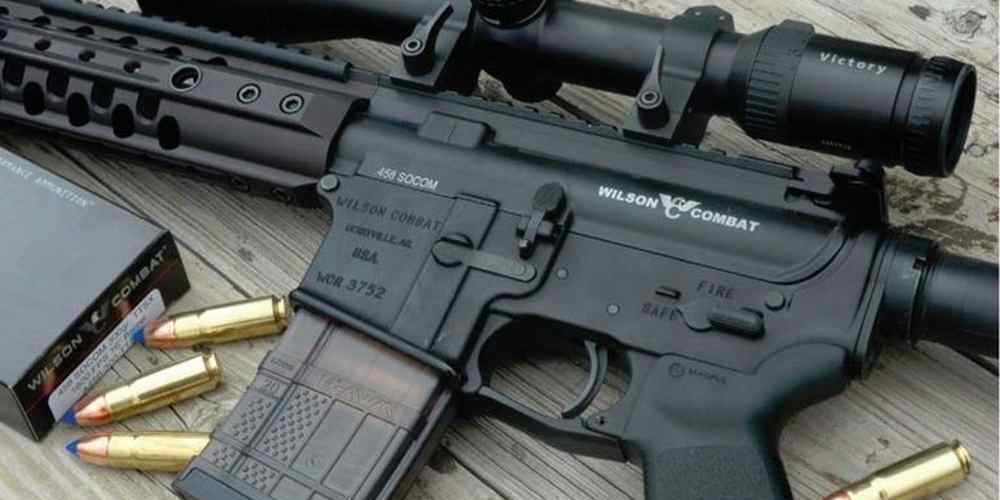“Precision in every shot: Understanding the impact of temperature and humidity on AR15 ammo performance.”
Effects of Temperature on AR15 Ammo Performance
When it comes to shooting accuracy and performance, many factors come into play, including the temperature and humidity levels. These environmental conditions can have a significant impact on the performance of AR15 ammunition. Understanding how temperature and humidity affect AR15 ammo performance is crucial for shooters looking to achieve consistent and reliable results.
Temperature plays a critical role in the performance of AR15 ammunition. As temperatures rise or fall, the density of the air changes, affecting the ballistic trajectory of the bullet. In colder temperatures, the air is denser, causing the bullet to slow down and drop more quickly. Conversely, in warmer temperatures, the air is less dense, allowing the bullet to travel faster and farther. This can result in a significant difference in point of impact, especially at longer distances.
Humidity levels also play a role in AR15 ammo performance. High humidity can cause moisture to accumulate on the bullet, affecting its aerodynamics and accuracy. This can lead to inconsistent shot placement and reduced overall performance. Additionally, high humidity can cause powder to become damp, affecting the velocity and pressure of the bullet as it travels down the barrel.
To mitigate the effects of temperature and humidity on AR15 ammo performance, shooters can take several steps. One option is to use temperature-stable powders that are less affected by changes in temperature. These powders are designed to maintain consistent performance regardless of environmental conditions, ensuring reliable shot placement.
Another option is to adjust the zero of the rifle based on the current temperature and humidity levels. By understanding how these factors affect the trajectory of the bullet, shooters can make the necessary adjustments to compensate for any deviations in point of impact. This can help maintain accuracy and consistency in varying environmental conditions.
It is also important to store ammunition properly to prevent moisture from affecting its performance. Keeping ammo in a cool, dry place can help maintain its integrity and ensure reliable performance when it is needed most. Additionally, using sealed containers or desiccants can help absorb excess moisture and protect the ammunition from humidity-related issues.
In conclusion, temperature and humidity can have a significant impact on the performance of AR15 ammunition. Understanding how these environmental factors affect bullet trajectory and accuracy is crucial for shooters looking to achieve consistent and reliable results. By using temperature-stable powders, adjusting rifle zero, and storing ammunition properly, shooters can mitigate the effects of temperature and humidity on AR15 ammo performance. By taking these steps, shooters can ensure that their ammunition performs at its best in any environmental conditions, allowing them to achieve optimal results on the range or in the field.
Impact of Humidity on AR15 Ammo Performance
When it comes to shooting accuracy and performance, many factors come into play, including the temperature and humidity levels in the environment. In this article, we will explore how humidity specifically affects the performance of AR15 ammunition.

Humidity is the amount of water vapor present in the air, and it can have a significant impact on the performance of ammunition. When the humidity levels are high, the moisture in the air can affect the gunpowder in the cartridge, causing it to become damp. This can lead to misfires, reduced velocity, and decreased accuracy.
One of the main ways that humidity affects AR15 ammunition is by causing the gunpowder to absorb moisture from the air. When gunpowder becomes damp, it can clump together, leading to inconsistent burning and reduced muzzle velocity. This can result in a decrease in accuracy and overall performance of the ammunition.
In addition to affecting the gunpowder, humidity can also cause the metal components of the ammunition to rust and corrode. This can lead to malfunctions and potentially dangerous situations when firing the weapon. It is important to store ammunition in a dry environment to prevent moisture from affecting its performance.
To mitigate the effects of humidity on AR15 ammunition, it is important to store the ammunition in a cool, dry place. This will help prevent moisture from seeping into the gunpowder and causing it to become damp. Additionally, using desiccant packs or dehumidifiers in the storage area can help absorb excess moisture and keep the ammunition dry.
When shooting in high humidity environments, it is important to take extra precautions to ensure the performance of the ammunition. This may include using ammunition that is specifically designed to be more resistant to moisture, such as sealed cartridges or those with waterproof coatings. Additionally, regularly inspecting and cleaning the firearm to prevent rust and corrosion can help maintain its performance in humid conditions.
In conclusion, humidity can have a significant impact on the performance of AR15 ammunition. By understanding how humidity affects gunpowder and metal components, shooters can take steps to mitigate its effects and ensure the accuracy and reliability of their ammunition. Storing ammunition in a dry environment, using moisture-resistant cartridges, and regularly maintaining the firearm are all important steps to take when shooting in humid conditions. By taking these precautions, shooters can enjoy consistent performance and accuracy with their AR15 ammunition, regardless of the humidity levels in the environment.
Best Practices for Storing AR15 Ammo in Varying Temperatures
When it comes to storing AR15 ammo, there are a few key factors to consider in order to maintain optimal performance. One of the most important factors to take into account is the temperature and humidity of the storage environment. These two variables can have a significant impact on the performance of your ammunition, so it’s important to understand how they can affect your AR15 ammo and what steps you can take to mitigate any potential issues.
Temperature plays a crucial role in the performance of AR15 ammo. Extreme temperatures, whether hot or cold, can cause the gunpowder in the cartridges to degrade, which can lead to misfires or other malfunctions. In general, it’s best to store your AR15 ammo in a cool, dry place where the temperature remains relatively stable. Ideally, you should aim to keep your ammo stored at a temperature between 50 and 70 degrees Fahrenheit.
If you live in an area that experiences extreme temperatures, such as very hot summers or very cold winters, you may need to take extra precautions to ensure that your AR15 ammo remains in good condition. One option is to invest in a climate-controlled storage solution, such as a gun safe with built-in temperature and humidity controls. These types of safes can help regulate the storage environment and keep your ammo in optimal condition.
Humidity is another important factor to consider when storing AR15 ammo. High humidity levels can cause moisture to seep into the cartridges, which can lead to corrosion and other damage. On the other hand, very low humidity levels can cause the gunpowder to dry out, which can also affect the performance of the ammunition.
To prevent humidity-related issues, it’s important to store your AR15 ammo in a dry environment. If you live in a humid climate, you may want to consider using desiccant packs or other moisture-absorbing products in your storage container to help keep the humidity levels in check. Additionally, you should regularly inspect your ammo for any signs of corrosion or other damage, and discard any cartridges that show signs of moisture exposure.
In addition to temperature and humidity, it’s also important to consider the type of storage container you use for your AR15 ammo. Ideally, you should store your ammo in its original packaging or in a dedicated ammo can that is designed to protect the cartridges from environmental factors. Make sure that the container is sealed properly to prevent moisture from getting in, and store it in a secure location where it won’t be exposed to extreme temperatures or humidity levels.
By taking these factors into consideration and following best practices for storing AR15 ammo in varying temperatures, you can help ensure that your ammunition remains in optimal condition and performs reliably when you need it. Remember to regularly inspect your ammo and replace any cartridges that show signs of damage, and always store your ammo in a safe and secure location away from extreme temperatures and humidity levels. With proper care and attention, your AR15 ammo will be ready to perform whenever you need it.
How to Adjust Shooting Techniques for Different Temperature and Humidity Conditions
When it comes to shooting an AR15, there are many factors that can affect the performance of your ammunition. One of the most important factors to consider is the temperature and humidity of your shooting environment. These two variables can have a significant impact on how your ammo performs, so it’s important to understand how to adjust your shooting techniques accordingly.
Temperature can have a major impact on the performance of your AR15 ammo. In general, colder temperatures can cause your ammunition to perform differently than it would in warmer conditions. This is because cold temperatures can cause the gunpowder in your cartridges to burn more slowly, which can result in decreased muzzle velocity and accuracy. On the other hand, warmer temperatures can cause the gunpowder to burn more quickly, which can lead to increased muzzle velocity and accuracy.
To adjust your shooting techniques for different temperature conditions, it’s important to first understand how temperature affects your ammunition. In colder temperatures, you may need to compensate for decreased muzzle velocity by adjusting your aim slightly higher than you normally would. This can help ensure that your shots hit their intended target despite the slower velocity of your ammo.
Conversely, in warmer temperatures, you may need to adjust your aim slightly lower than usual to account for the increased muzzle velocity of your ammunition. This can help prevent your shots from overshooting their target and ensure that you maintain accuracy even in hot conditions.
Humidity is another important factor to consider when it comes to AR15 ammo performance. High humidity levels can cause your cartridges to absorb moisture, which can lead to misfires and decreased accuracy. On the other hand, low humidity levels can cause your cartridges to dry out, which can also affect their performance.
To adjust your shooting techniques for different humidity conditions, it’s important to take steps to protect your ammunition from moisture. This can include storing your cartridges in airtight containers or using desiccant packs to absorb excess moisture. Additionally, you may need to clean and lubricate your firearm more frequently in high humidity conditions to prevent rust and corrosion.
In conclusion, understanding how temperature and humidity can affect the performance of your AR15 ammunition is crucial for maintaining accuracy and consistency in your shooting. By adjusting your shooting techniques for different temperature and humidity conditions, you can ensure that your shots hit their intended target every time. So next time you head to the range, be sure to consider the weather conditions and make any necessary adjustments to your shooting techniques.
Importance of Monitoring Temperature and Humidity Levels for Optimal AR15 Ammo Performance
When it comes to shooting accuracy and performance, many factors come into play. One often overlooked aspect is the impact of temperature and humidity on AR15 ammunition. Understanding how these environmental conditions affect your ammo can make a significant difference in your shooting experience.
Temperature plays a crucial role in the performance of AR15 ammunition. As temperatures rise, the gunpowder in the cartridge becomes more volatile, leading to increased pressure and velocity. On the other hand, colder temperatures can cause the gunpowder to burn more slowly, resulting in decreased pressure and velocity. This means that shooting in extreme temperatures can significantly impact the accuracy and consistency of your shots.
Humidity is another important factor to consider when it comes to AR15 ammo performance. High humidity levels can cause moisture to seep into the cartridge, potentially affecting the gunpowder and primer. This can lead to misfires or inconsistent performance. On the other hand, low humidity levels can cause the gunpowder to become dry and brittle, which can also impact the performance of the ammunition.
To ensure optimal performance, it is essential to monitor both temperature and humidity levels when shooting your AR15. Investing in a quality temperature and humidity gauge can help you keep track of these environmental factors and make adjustments as needed. Additionally, storing your ammunition in a cool, dry place can help maintain its integrity and performance.
When shooting in extreme temperatures, it is essential to take extra precautions to ensure the safety and performance of your AR15 ammunition. This may include adjusting your shooting technique, using different types of ammunition, or even choosing to shoot at different times of the day when temperatures are more moderate.
In conclusion, monitoring temperature and humidity levels is crucial for optimal AR15 ammo performance. By understanding how these environmental factors affect your ammunition, you can make informed decisions to improve your shooting accuracy and consistency. Remember to invest in a quality temperature and humidity gauge, store your ammunition properly, and take extra precautions when shooting in extreme conditions. By taking these steps, you can ensure that your AR15 performs at its best every time you pull the trigger.





